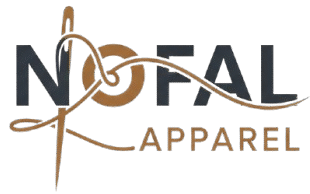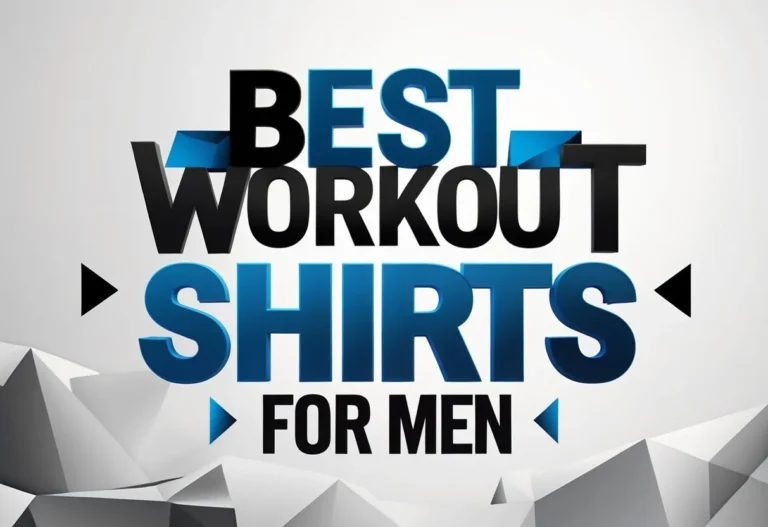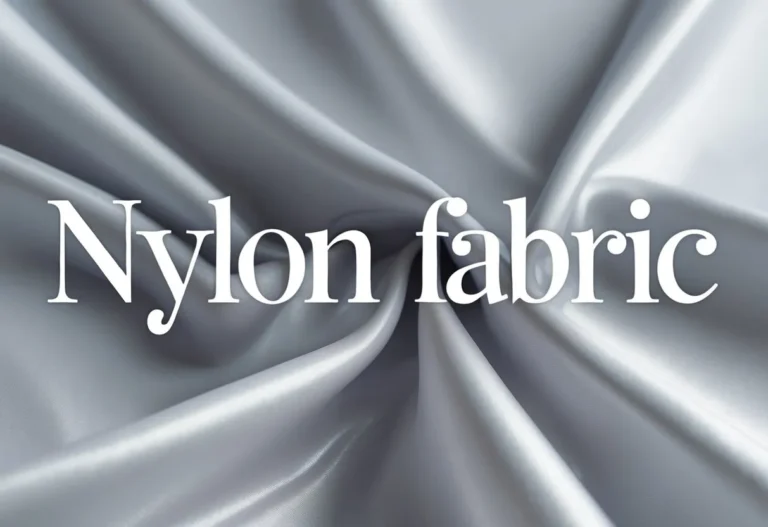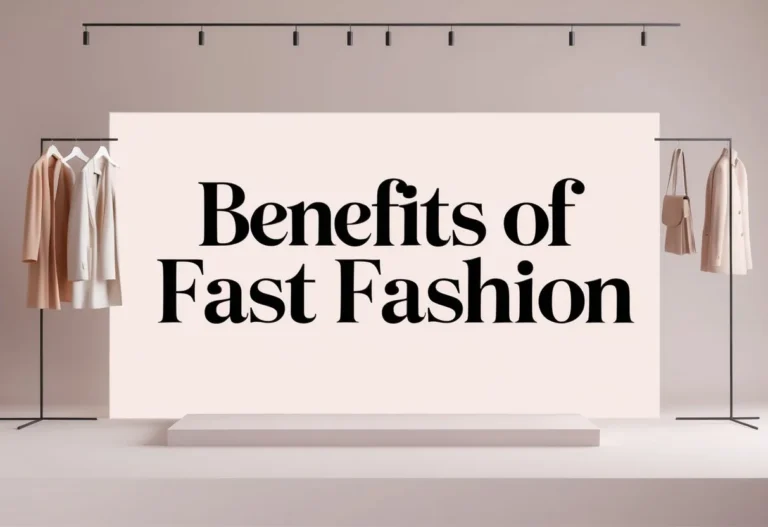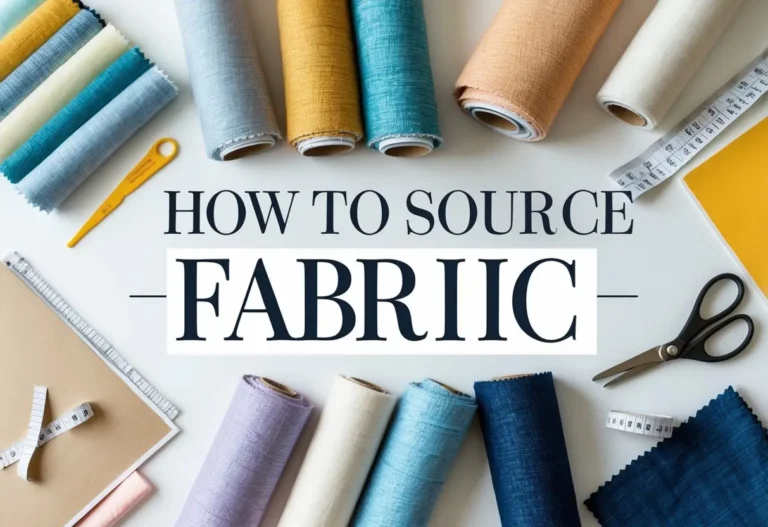Finding the right clothing manufacturer can make or break a fashion brand’s success. The key to finding a reliable clothing manufacturer involves preparing detailed design specifications, researching both domestic and overseas options, and thoroughly vetting potential partners through samples and reference checks. Many new brand owners feel overwhelmed by this process, but with the right approach, it becomes much more manageable. Here you will have complete guide for how to find a clothing manufacturer.?

The decision between domestic and overseas manufacturing represents one of the first major choices entrepreneurs face. Domestic manufacturers typically offer lower minimum orders and easier communication, while overseas options provide lower costs per item. Each path has distinct advantages depending on budget, timeline, and business goals.
Success in manufacturer selection requires careful preparation before starting the search. Brands need complete tech packs, clear quality standards, and realistic budget expectations. This groundwork ensures productive conversations with potential manufacturing partners and helps avoid costly mistakes during production.
Key Takeaways
- Prepare detailed design specifications and quality standards before contacting any manufacturers
- Choose between domestic and overseas options based on your budget, order size, and communication needs
- Always request samples from top candidates and check references before committing to a manufacturing partnership
Clarifying Your Clothing for How To Find A Clothing Manufacturer

Before reaching out to manufacturers, fashion brands must define specific production needs and quality expectations. Clear requirements help identify the right manufacturing partners and prevent costly mistakes during production.
Finalizing Your Design and Tech Packs
Tech packs serve as the blueprint for garment production. They contain detailed specifications that manufacturers need to create accurate samples and final products.
A complete tech pack includes flat sketches with front and back views. It shows seam placement, construction details, and finishing requirements. Measurements for each size must be precise and clearly marked.
Essential tech pack elements:
- Fabric specifications and weight
- Color codes and Pantone references
- Trim details and hardware specifications
- Construction notes and stitch types
- Grading rules for different sizes
Design complexity directly affects manufacturing costs and timeline. Simple designs with basic construction require less specialized equipment. Complex garments with intricate details need manufacturers with advanced capabilities.
Brands should finalize all design decisions before creating tech packs. Last-minute changes increase costs and delay production timelines.
Defining Target Quality Standards for How To Find A Clothing Manufacturer
Quality standards determine which manufacturers can meet production requirements. Different price points require different quality levels and manufacturing processes.
Fabric quality affects both product performance and customer satisfaction. Premium brands need high-quality materials with consistent color and texture. Budget brands may accept lower-grade fabrics to meet price targets.
Key quality factors to define:
- Acceptable fabric defect rates
- Stitching quality requirements
- Color matching tolerances
- Packaging and labeling standards
Construction quality varies significantly between manufacturers. Brands must specify seam strength, button attachment methods, and finishing requirements. Clear quality standards help manufacturers quote accurate prices.
Sample approval processes ensure quality consistency. Brands should establish approval checkpoints throughout production to catch issues early.
Establishing Budget and Expected Pricing
Production budgets guide manufacturer selection and order quantities. Realistic pricing expectations help identify suitable manufacturing partners within budget constraints.
Factors affecting garment pricing:
- Order quantities and minimum requirements
- Fabric costs and material sourcing
- Labor complexity and construction time
- Packaging and trim specifications
Small order quantities increase per-unit costs significantly. Manufacturers often have minimum order quantities that brands must meet. Budget planning should include setup fees, sample costs, and shipping expenses.
Pricing varies greatly between domestic and overseas production. Domestic manufacturers typically cost more but offer faster turnaround times. Overseas production reduces costs but requires longer lead times and quality oversight.
Fashion brands should request detailed cost breakdowns from potential manufacturers. This helps compare pricing accurately and identify areas for cost optimization without compromising quality standards.
Selecting the Right Type of Clothing Manufacturer

Choosing the right clothing manufacturer depends on your brand’s specific needs, budget, and growth plans. The decision between domestic and overseas manufacturers affects costs, communication, and quality control, while understanding each manufacturer’s capabilities ensures they can handle your product requirements.
Domestic vs Overseas Manufacturers
Domestic manufacturers operate within the same country as the clothing brand. They offer easier communication and faster shipping times. Most domestic clothing factories have lower minimum order quantities, making them ideal for startups testing new designs.
The main advantage is quality control. Brand owners can visit the facility in person to check production standards. Time zone alignment makes phone calls and meetings simpler.
Overseas manufacturers typically offer lower production costs per unit. Countries like China, Vietnam, and Bangladesh have established garment manufacturing industries with competitive pricing.
However, overseas manufacturers usually require higher minimum orders. Communication barriers and longer shipping times can create challenges. Customs delays and import duties add complexity to the process.
| Factor | Domestic | Overseas |
|---|---|---|
| Cost per unit | Higher | Lower |
| Minimum orders | 30-100 pieces | 300-1000 pieces |
| Communication | Same language/timezone | Language barriers possible |
| Quality visits | Easy factory visits | Expensive travel required |
Understanding Manufacturer Capabilities
Different clothing manufacturers specialize in specific product types and production methods. Cut and sew manufacturers create garments from raw materials using provided patterns. They handle the complete construction process from fabric cutting to finished products.
Private label manufacturers offer pre-designed clothing that brands can customize with their own labels and branding. This option requires less design work but offers limited uniqueness.
Some garment manufacturers focus on specific materials like denim, knits, or wovens. Others specialize in particular clothing categories such as activewear, formal wear, or children’s clothing.
Fashion industry manufacturers may offer additional services like pattern making, grading, and tech pack development. These full-service providers handle more of the design and development process.
Ask potential partners about their equipment, staff expertise, and quality certifications. Request samples of similar products they have produced to evaluate their capabilities.
Evaluating Production Capacity and Scalability
Production capacity refers to how many units a clothing factory can produce within a specific timeframe. Small manufacturers might handle 500-2000 pieces per month, while large facilities can produce tens of thousands of units.
Consider your current order size and future growth plans. A manufacturer that works well for initial orders of 100 pieces might not scale effectively when orders reach 5000 pieces.
Scalability means the manufacturer can grow production volume as your brand expands. Some clothing manufacturers specialize in small batch production but cannot handle larger orders efficiently.
Ask about their current client load and peak production times. Factories operating at full capacity may struggle to meet tight deadlines or accommodate rush orders.
Review their equipment and facility size. Modern machinery and adequate floor space indicate better scalability potential than outdated equipment in cramped facilities.
Request production timelines for different order quantities. This information helps determine if they can support your brand’s growth trajectory in the fashion industry.
Where and How to Find Clothing Manufacturers

Finding the right clothing manufacturer requires knowing where to look and understanding the benefits of each approach. The three main channels include online platforms that connect brands with factories worldwide, physical events where manufacturers showcase their capabilities, and professional networks that provide trusted recommendations.
Online Directories and Marketplaces
Online platforms serve as the most accessible starting point for finding clothing manufacturers. Alibaba connects brands with thousands of overseas factories, primarily in China and Southeast Asia. The platform allows filtering by minimum order quantities, product categories, and manufacturer certifications.
Sewport specializes specifically in clothing production and offers a curated list of vetted manufacturers. The platform focuses on quality over quantity and provides detailed manufacturer profiles with specializations and capabilities.
Maker’s Row concentrates on domestic manufacturers in the United States. This platform works well for brands seeking lower minimum order quantities and easier communication with American factories.
These directories require careful evaluation of each manufacturer. Brands should review factory certifications, read previous client reviews, and examine sample work before making contact. Most platforms offer messaging systems that allow direct communication with potential manufacturing partners.
Trade Shows and Sourcing Events
Texworld and similar trade shows bring together fabric suppliers, clothing manufacturers, and fashion brands in one location. These events provide opportunities to meet factory representatives face-to-face and examine fabric samples directly.
Trade shows offer several advantages over online searching. Attendees can assess manufacturer professionalism through in-person interactions. They can also see and feel fabric quality immediately rather than relying on photos or descriptions.
MAGIC, Première Vision, and regional fashion weeks often include manufacturer exhibitions. These events typically occur annually in major fashion cities. Brands can schedule appointments with multiple manufacturers during a single trip.
Preparation proves essential for trade show success. Brands should bring tech packs, business cards, and clear specifications for their clothing production needs. Setting up meetings in advance maximizes the effectiveness of show attendance.
Industry Networks and Referrals
Professional networks often provide the most reliable manufacturer recommendations. Other brand owners who have successfully worked with specific factories can share honest feedback about quality, communication, and reliability.
Fashion incubators and industry associations maintain lists of trusted manufacturing partners. These organizations often have established relationships with manufacturers who understand startup needs and minimum order requirements.
Social media platforms like LinkedIn allow direct connection with factory owners and production managers. Industry-specific Facebook groups and Reddit communities provide forums where brand owners discuss their manufacturing experiences.
Referrals typically yield the highest success rates because they come from verified working relationships. Brands should ask for specific details about shipping reliability, quality control processes, and communication responsiveness when seeking referrals.
Assessing and Approaching Potential Manufacturing Partners

Once you have identified potential manufacturers, the evaluation process begins with three critical steps. Proper sampling, understanding minimum order requirements, and testing communication channels will determine if a partnership can succeed long-term.
Requesting Samples and Prototypes
Sampling serves as the foundation for any successful manufacturing partnership. Fashion entrepreneurs should request samples before committing to any production agreement.
Start by asking for existing samples of similar products. This shows the manufacturer’s current quality standards and construction methods. Pay attention to stitching consistency, fabric handling, and finishing details.
Request a custom sample using your specifications. Provide detailed tech packs that include measurements, materials, and construction notes. This tests their ability to follow instructions accurately.
Evaluate samples for:
- Fabric quality and texture
- Seam strength and finishing
- Sizing accuracy
- Overall craftsmanship
Most manufacturers charge between $50-200 per custom sample. This cost is normal and shows their commitment to quality work.
Allow 2-4 weeks for sample production. Rushing this process often leads to poor results and misunderstandings later.
Minimum Order Quantity (MOQ) Considerations
MOQ represents the smallest order a manufacturer will accept. Understanding these requirements helps fashion entrepreneurs plan inventory and cash flow effectively.
Small manufacturers typically require 50-200 pieces per style. Large factories often demand 500-1000 pieces minimum. These numbers vary based on product complexity and fabric choices.
Factor MOQ into your business planning:
- Calculate total investment needed
- Assess storage capacity requirements
- Plan for multiple color or size options
Some manufacturers offer lower MOQs for first-time customers. Others provide flexibility during slower production periods. Ask about these options directly.
Consider the relationship between MOQ and pricing. Higher quantities usually mean lower per-piece costs. However, ordering beyond your sales capacity creates cash flow problems.
Negotiate payment terms alongside MOQ discussions. Many manufacturers accept 30-50% deposits with the balance due before shipping.
Communication and Responsiveness
Clear communication determines whether a manufacturing partner can execute your vision successfully. Test their responsiveness and language skills during initial conversations.
Professional manufacturers respond to emails within 24-48 hours during business days. They ask specific questions about your requirements and provide detailed answers to yours.
Evaluate communication quality through:
- Email response time and clarity
- Technical knowledge of your product category
- Willingness to provide references
- Transparency about capabilities and limitations
Language barriers can create costly mistakes. Ensure your potential partner understands technical terms and construction methods relevant to your products.
Schedule video calls when possible. Face-to-face conversations reveal communication styles and build stronger working relationships.
Document all conversations in writing. Follow up phone calls with email summaries to confirm important details and agreements.
Red flags include vague responses, pressure for immediate decisions, or reluctance to provide samples or references.
Ensuring Quality and Sustainable Practices

Quality control systems, ethical labor standards, and eco-friendly materials form the foundation of responsible manufacturing partnerships. These factors directly impact product durability, brand reputation, and environmental responsibility.
Quality Control and Inspection
Manufacturers should have clear quality control processes for every production stage. This includes checking fabric quality before cutting, monitoring stitching quality during assembly, and final product inspection.
Ask potential manufacturers about their quality control methods. They should test samples at multiple points during production. Good manufacturers check seam strength, fabric durability, and color consistency.
Stitching quality affects how long clothes last. Look for manufacturers who use proper stitch types for different garment areas. Seams should be straight and secure.
Request details about their inspection process. They should check measurements, construction details, and packaging quality. Some manufacturers offer third-party quality audits.
Quality Control Checklist:
- Fabric testing procedures
- Stitching quality standards
- Final inspection process
- Defect rate tracking
- Sample approval system
Ethical Labor and Fair Trade
Ethical labor practices protect workers and support your brand’s reputation. Look for manufacturers with fair wage policies and safe working conditions.
Check for certifications like BSCI or Fair Trade. These prove the manufacturer follows ethical labor standards. BSCI certification ensures safe working conditions and fair wages.
Ask about worker benefits and training programs. Good manufacturers invest in their employees’ well-being. They should provide proper safety equipment and reasonable working hours.
Visit the facility if possible. This lets you see working conditions firsthand. Workers should appear comfortable and the environment should be clean and safe.
Request evidence of labor audits. Third-party audits verify that ethical practices are actually followed, not just promised.
Eco-friendly Materials and Sustainability
Sustainable manufacturers use materials that minimize environmental impact. Organic cotton, bamboo, and recycled polyester are popular eco-friendly options.
Organic cotton grows without harmful pesticides and uses less water than conventional cotton. Recycled polyester reduces plastic waste by reusing existing materials.
Ask about material sourcing practices. Manufacturers should know where their materials come from. They should work with suppliers who follow environmental standards.
Look for certifications like GOTS or OEKO-TEX. GOTS ensures organic materials are used throughout production. OEKO-TEX verifies materials are free from harmful chemicals.
Sustainable Material Benefits:
| Material | Environmental Impact | Key Benefits |
|---|---|---|
| Organic Cotton | No pesticides, less water | Soft, breathable, biodegradable |
| Recycled Polyester | Reduces plastic waste | Durable, moisture-wicking |
| Hemp | Fast-growing, minimal water | Strong, long-lasting |
Check their waste reduction methods. Good manufacturers recycle fabric scraps and use energy-efficient production processes.
Finalizing Production Terms and Scaling Up

Understanding lead times and establishing clear payment terms are critical steps that determine your production success. These decisions directly impact your cash flow, inventory planning, and ability to meet customer demand.
Lead Times and Shipping Time
Sample production typically takes 2-4 weeks for most garment manufacturers. This timeline can vary based on the complexity of your design and the manufacturer’s current workload.
Bulk production requires 4-8 weeks on average. Simple garments like t-shirts may finish faster, while complex items with embroidery or special materials take longer.
Domestic vs. Overseas Timeline Differences:
- Domestic manufacturers: 3-6 weeks total production time
- Overseas manufacturers: 6-12 weeks including shipping
Shipping adds extra time for overseas production. Sea freight takes 2-4 weeks, while air freight takes 3-7 days but costs significantly more.
Plan your inventory around these timelines. Add buffer time for potential delays, especially during peak seasons when garment manufacturers have higher demand.
Confirm lead times in writing before starting production. Ask manufacturers about their busiest periods so you can plan orders accordingly.
Negotiating Contracts and Payment Terms
Most manufacturers require a deposit before starting production. Standard terms include 30-50% upfront with the balance due before shipping.
Common Payment Structures:
- 50/50 Split: Half upfront, half before delivery
- 30/70 Split: 30% to start, 70% on completion
- Staged Payments: Multiple payments throughout production
Negotiate payment methods that protect both parties. Letters of credit work well for large overseas orders, while domestic manufacturers often accept wire transfers or checks.
Include quality control standards in your contract. Specify what happens if garments don’t meet agreed specifications or delivery deadlines.
Set clear penalties for late delivery. Many brands negotiate 1-3% discounts for each week of delay beyond the agreed timeline.
Request sample approval clauses that prevent production from starting until you approve the final sample. This protects you from receiving incorrect garments.
Top 5 Clothing Manufacturers For You

Finding the right clothing manufacturer can make or break your fashion brand. These five companies offer different strengths for various business needs.
1. Nofal Apparel
- Specialty: Cut and sew manufacturing
- MOQ: 50-100 pieces per style
- Location: Domestic operations
- Best For: Startups and small brands needing flexibility
2. Baagh Enterprises
- Specialty: Sustainable fabric production
- MOQ: 200-500 pieces per style
- Location: International manufacturing
- Best For: Eco-conscious brands focusing on organic materials
3. Bestest Industries
- Specialty: High-volume production
- MOQ: 1,000+ pieces per style
- Location: Overseas manufacturing
- Best For: Established brands needing cost-effective bulk orders
4. Lefty Production
- Specialty: Premium quality garments
- MOQ: 25-75 pieces per style
- Location: Domestic manufacturing
- Best For: Luxury brands prioritizing craftsmanship over cost
5. Scrod Industries
- Specialty: Technical and performance wear
- MOQ: 300-800 pieces per style
- Location: Mixed domestic and international
- Best For: Athletic and outdoor clothing brands
Each manufacturer offers different pricing structures and lead times. Research their specific capabilities before making contact. Most require tech packs and material specifications for accurate quotes.
Consider your budget, timeline, and quality requirements when choosing. Sample orders help test their work quality before committing to larger production runs.
Frequently Asked Questions
Finding the right clothing manufacturer involves specific steps, resources, and vetting processes. Here are answers to common questions about locating reliable partners, using online platforms, and ensuring quality standards.
What steps should I follow to locate a reliable clothing manufacturer?
The first step involves preparing four essential documents. Create a detailed tech pack with technical drawings, measurements, and material specifications. Develop a clear Bill of Materials listing every component needed.
Define quality standards including stitches per inch and seam requirements. Set a target cost per unit that allows for profit margins.
Begin searching through online B2B directories like Alibaba and Maker’s Row. Use specific search terms like “low MOQ cut and sew manufacturer USA” instead of general phrases.
Contact 5-7 potential manufacturers with professional inquiry emails. Include your tech pack and estimated order quantities in the initial contact.
Order samples from your top 2-3 choices. Compare them using a scorecard that evaluates stitching quality, fabric accuracy, and sizing consistency.
Request 2-3 client references from your preferred manufacturer. Contact these references to verify their experience and satisfaction levels.
What resources are best for finding clothing manufacturers suitable for startups?
Domestic manufacturers often offer MOQs as low as 30-50 pieces per style. This makes them ideal for startups with limited budgets and smaller initial orders.
Online platforms like Maker’s Row specialize in connecting brands with North American manufacturers. These platforms filter results by minimum order quantities and production capabilities.
Local fashion incubators provide lists of trusted factory partners. Search for “[Your City] fashion incubator” or “apparel association” to find these resources.
Social media communities like Reddit’s r/streetwearstartup share manufacturer recommendations. Brand owners frequently discuss their experiences with different factories.
Industry trade shows like MAGIC allow face-to-face meetings with factory representatives. These events showcase capabilities and build relationships quickly.
How do I find a local clothing manufacturer in my area?
Start by searching Google using specific location-based terms. Use queries like “clothing manufacturer [your city]” or “cut and sew factory near me.”
Contact local fashion schools and design programs. They maintain relationships with regional manufacturers and can provide recommendations.
Check with your city’s economic development office. They keep databases of local manufacturing businesses and can connect you with appropriate contacts.
Visit local garment districts if your city has one. Walk through these areas to discover smaller manufacturers that may not have strong online presence.
Network with other local fashion brands. Ask about their manufacturing partners and experiences working with regional factories.
What online platforms can I use to connect with clothing manufacturers?
Alibaba hosts thousands of clothing manufacturers worldwide. Use filters for country, product type, and minimum order quantities to narrow results.
Sewport specializes in connecting fashion brands with manufacturers globally. The platform vets suppliers and provides detailed company profiles.
Maker’s Row focuses on North American manufacturers. It offers lower MOQs and easier communication due to time zone alignment.
ThomasNet lists US-based manufacturers across all industries. Search specifically for clothing and textile companies in your region.
LinkedIn allows direct contact with factory owners and managers. Search for clothing manufacturers and send professional connection requests.
How can I ensure the quality and reliability of a prospective clothing manufacturer?
Conduct a digital audit of their online presence first. Review their website, social media accounts, and client testimonials for professionalism.
Always order samples before placing bulk orders. Sample quality directly reflects the manufacturer’s capabilities and attention to detail.
Expect to pay 1.5 to 3 times the final unit cost for samples. This covers the factory’s time and materials for small-batch production.
Test their communication responsiveness during the sampling process. Reliable manufacturers respond promptly and answer questions clearly.
Ask for 2-3 client references from current or recent customers. Contact these references to verify production quality and delivery timelines.
Visit the factory in person if geographically possible. This allows direct assessment of equipment, cleanliness, and working conditions.
What are the ways to find and vet clothing manufacturers on Alibaba?
Use specific search filters to narrow results effectively. Filter by country, trade assurance, and minimum order quantity to find suitable matches.
Look for suppliers with Trade Assurance badges. This program protects buyers if suppliers fail to meet contract terms or quality standards.
Check supplier verification status and years in business. Established suppliers with verified credentials pose lower risks.
Read customer reviews and ratings carefully. Pay attention to recent feedback about quality, communication, and delivery times.
Request samples from multiple suppliers for comparison. Compare quality, pricing, and turnaround times before making decisions.
Communicate through Alibaba’s messaging system initially. This provides protection and creates a record of all conversations and agreements.
Ask detailed questions about production capacity and current client base. Reliable suppliers will provide transparent answers about their capabilities.
